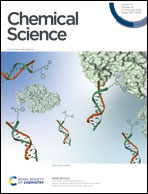Organocatalytic atroposelective synthesis of axially chiral N,N′-pyrrolylindoles via de novo indole formation†
Abstract
The first organocatalytic atroposelective synthesis of axially chiral N,N′-pyrrolylindoles based on o-alkynylanilines was successfully established via de novo indole formation catalyzed by chiral phosphoric acid (CPA). This new synthetic strategy introduced CPA-catalyzed asymmetric 5-endo-dig cyclization of new well-designed o-alkynylanilines containing a pyrrolyl unit, resulting in a wide range of axially chiral N,N′-pyrrolylindoles in high yields with exclusive regioselectivity and excellent enantioselectivity (up to 99% yield, >20 : 1 rr, 95 : 5 er). Considering the potential biological significance of N–N atropisomers, preliminary biological activity studies were performed and revealed that these structurally important N,N′-pyrrolylindoles had a low IC50 value with promising impressive cytotoxicity against several kinds of cancer cell lines. DFT studies reveal that the N-nucleophilic cyclization mediated by CPA is the rate- and stereo-determining step, in which ligand–substrate dispersion interactions facilitate the axial chirality of the target products.

- This article is part of the themed collection: 130th Anniversary of Wuhan University


 Please wait while we load your content...
Please wait while we load your content...